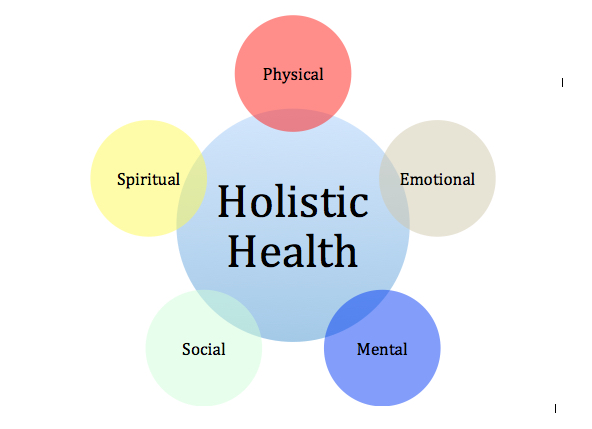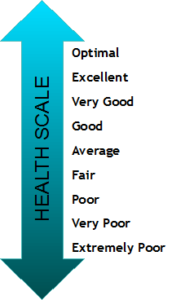There are five (5) dimensions of health: physical, mental, emotional, spiritual, and social. These five (5) dimensions of health provide a full picture of health as a change in any dimension affects the others. This interrelationship between the dimensions of health is one of the key aspects that you need to understand for Preliminary PDHPE.
Physical
The physical dimension of health refers to the bodily aspect of health. It refers to the more traditional definitions of health as the absence of disease and injury. Physical health ranges in quality along a continuum where a combination of diseases such as cancer, diabetes, cardiovascular disease or hypertension are at one end and a person who is at optimum physical condition (think health not fitness) is at the other.
Physical health can affect the other dimensions of health as a decline in physical health can result in a decline in other forms of health. E.g. a person who suddenly gets the flu is often isolated socially as to not infect others, struggles to focus in order to study or learn anything new, and may feel sad as a result of their isolation.
Mental
Mental health refers to the cognitive aspect of health. Often mental health is linked to or includes emotional health, I want to distinguish the two. Mental health is more the functioning of the brain, while emotional health refers to the a persons mood often connected to their hormones. Mental health then includes many mental health issues such as Alzheimers and dementia. It refers to the persons ability to use their brain and think. This may be to solve problems or to recall information, but the focus is on the cognitive aspect of the person.
Mental healthcare affect the other dimensions of health. An increase in mental health can come as a result of increased physical activity, and good mental health can then lead to an increase in self esteem as mental performance improves. Greater self esteem then leads to more confidence in social situations and can lead one to ask the larger questions about life leading to increased spiritual health.
Emotional
Emotional health is about the persons mood or general emotional state. It is our ability to recognise and express feelings adequately. It relates to you self esteem as well as your ability control your emotions to maintain a realistic perspective on situations. The relationship between emotional and mental health is clear and as such some illnesses relate to both, such as: depression and anxiety.
Emotional health affects the other dimensions of health as a person with a good self esteem is more confident in social settings, makes friends quickly and often performs better in physical activity.
Spiritual
Spiritual health relates to our sense of overall purpose in life. People often find this purpose from a belief or faith system, while others create their own purpose. A person who has purpose to life is said to be healthier than those who don’t see a purpose to life.
Spiritual health will very easily affect emotional and mental health as having a purpose in life can help you to apply yourself to achieving goals. Having a purpose to life can also help people to maintain a proper perspective on life and overcome adversity. Often people who are spiritual meet together regularly around their spiritual purpose, which helps to improve their social health.
Social
The social dimension of health refers to our ability to make and maintain meaningful relationships with others. Good social health includes not only having relationships but behaving appropriately within them and maintaining socially acceptable standards. The basic social unit of relationship is the family, and these relationships impact a persons life the most. Other key relationships are close friends, social networks, teachers, and youth leaders.
Social health affects the other dimensions of health in many ways. A bad social life can lead a person to question their purpose in life or feel isolated and unwanted. Such feelings can demotivate people from physical activity and lead them towards depression.


